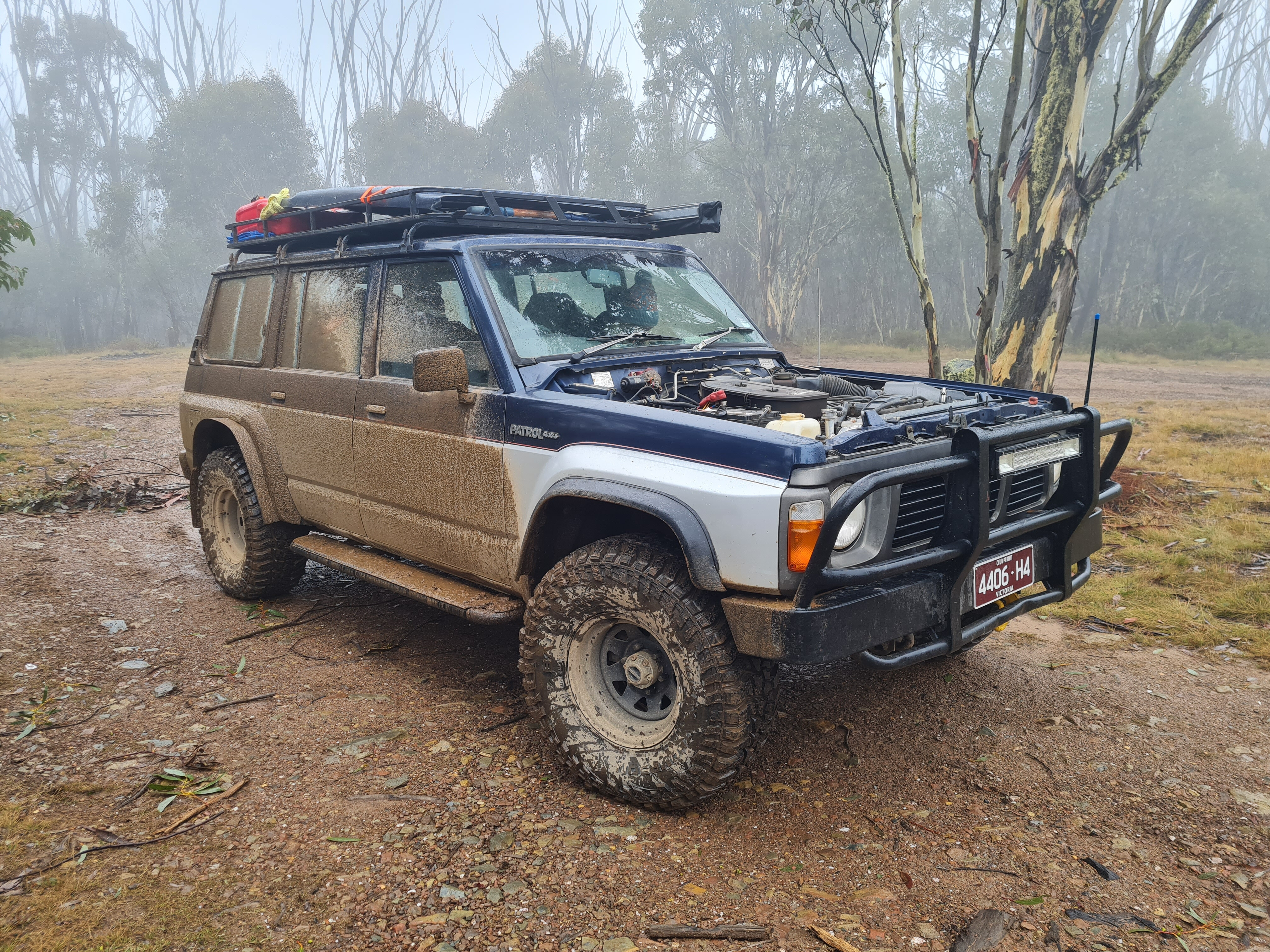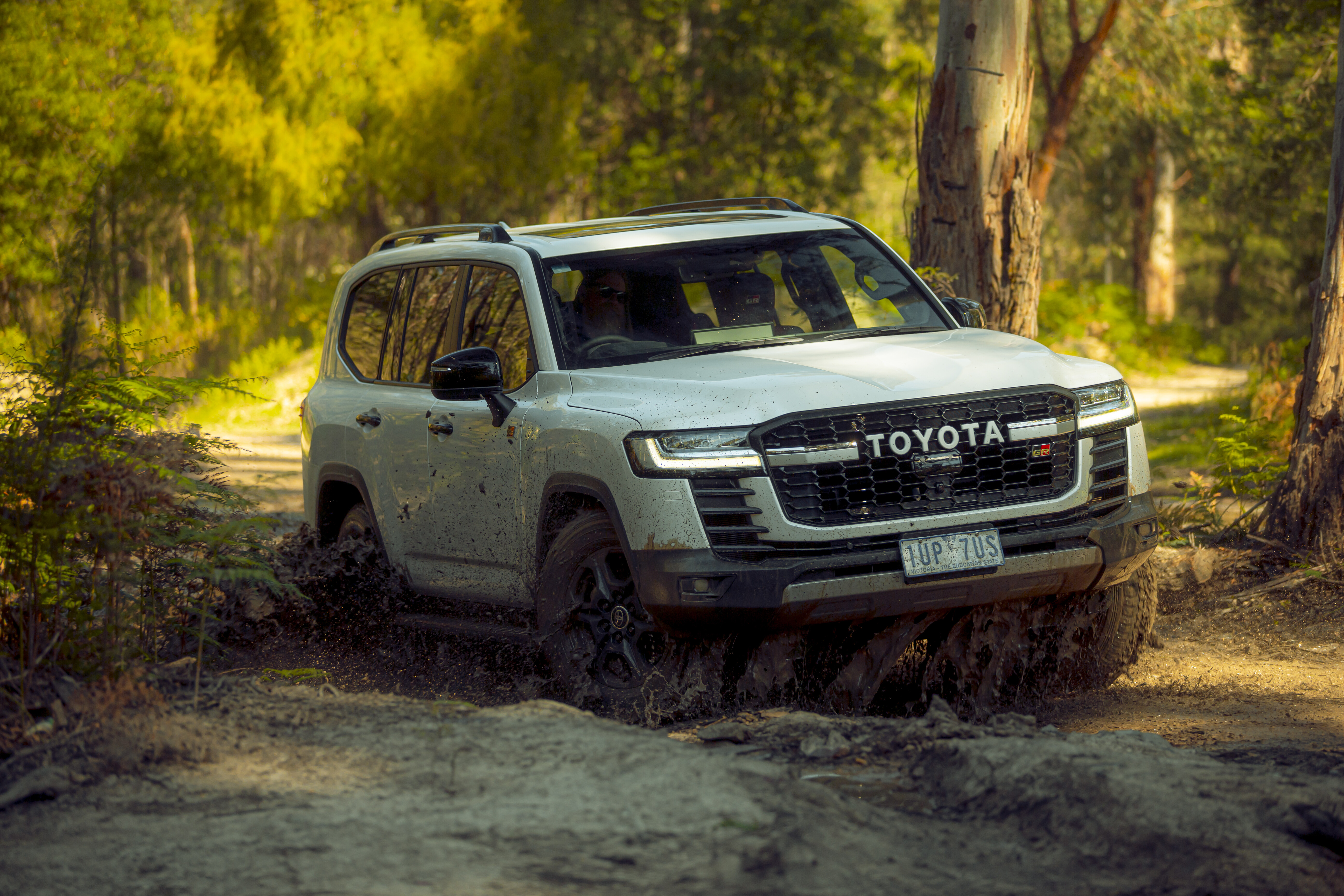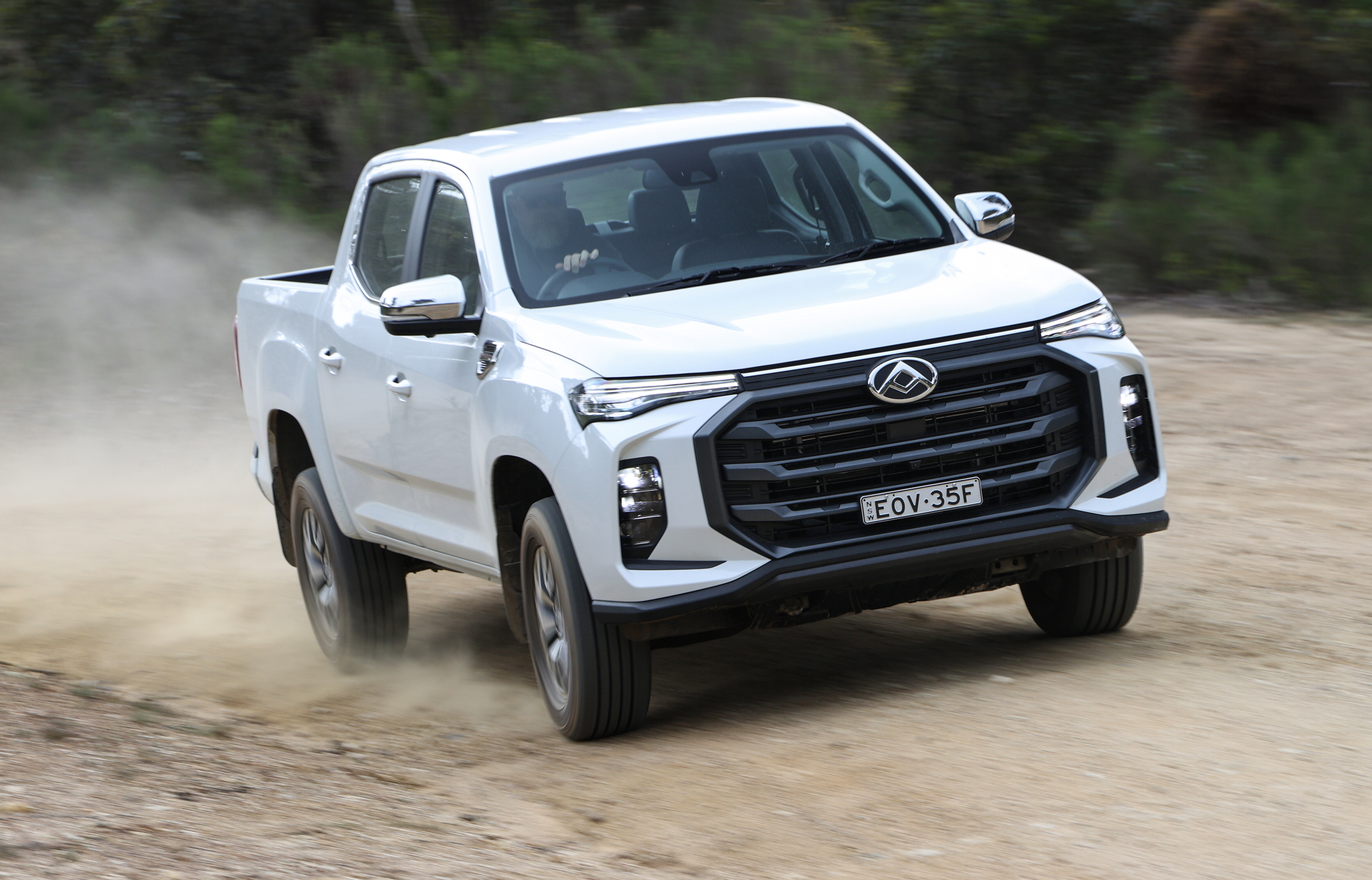THE WAIT is over, as we finally dive behind the wheel of the hotly anticipated Jeep Gladiator pick-up.
At the end of World War II Willys Overland emerged as a major player in the US automobile industry. Having produced more than 600,000 vehicles specifically for the war effort, its role as a peace-time manufacturer would need to expand. In 1947, the first Jeep “utility” truck rolled out of its Toledo, Ohio, facility and the rest, we will say, is history.
LOCAL DRIVE: 2019 JL Wrangler
The Willys pickup was phased out in the 1960s and replaced by the full-sized Gladiator, which claimed numerous “J” designations and enjoyed a 26-year tenure. The mid-size Comanche, introduced in 1982, ended production in 1994 and the seven-slot grille would be “bedless” for more than a quarter of a century.
Jeep has since hung a few carrots in front of pick-up ute devotees with their annual batch of concept vehicles. The J12 Scrambler, NuKaiser and Crew Chief 715 prompted the question: when was Jeep going to get back in the pick-up game? Enter the 2020 Wrangler JT Gladiator.

CHASSIS, DRIVETRAIN AND CAPACITIES
WHILE most money would have been bet on Jeep simply stretching four-door Wrangler and dropping a bed on the back, the team in Toledo knew that being competitive in the ute market would require, well, building a ute. They worked with Ram to design a chassis worthy of solid payload and towing capacities, as well as Dana and Fox for upgraded axles and shocks. As is the case with the new-generation of Ram trucks, the frame is comprised of high-strength steel to reduce weight and increase rigidity.
Raising the hood reveals a Pentastar 3.6-litre V6 tuned to produce an impressive 213kW and 353Nm. No surprises that the Pentastar has become one of the industry’s most versatile and reliable mid-size mills. The D478 six-speed manual transmission is standard fare (manual cog gearheads rejoice), while the 850RE eight-speed automatic is an available option ($2000). Gladiator won’t see the turbocharged four-cylinder found in the JL, but Jeep states that 2020 will bring the 3.0-liter EcoDiesel in US models. However, Jeep isn’t giving specifics on powertrains for the Australian market just yet. Transfer case options are the NV241 Command-Trac (Sport and Overland models) and the NV241 Rock-Trac (Rubicon).
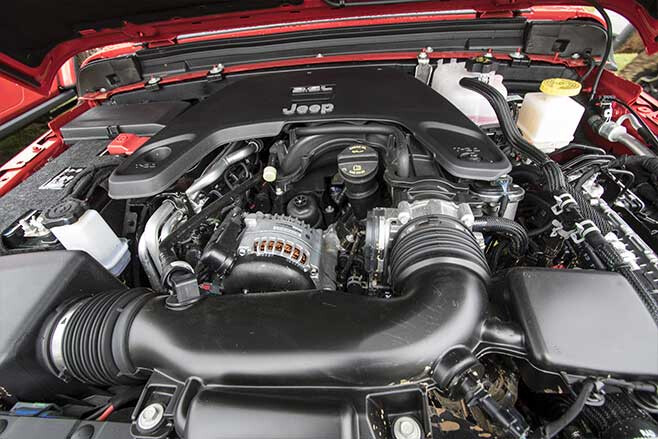
Down below are Gen III Dana 44 axles fitted with 3.73:1 or 4.10:1 gears depending on model. As with its JL sibling, the suspension is coil-sprung links with monotube gas shocks. Rubicon models will host features we’ve grown to love: a 4:1 low-range transfer case, electronically actuated Tru-Lok differentials, one-button disconnectable front sway bar, Fox 2.0 shocks and 33-inch Falken all-terrain tyres.
WALKAROUND, INTERIOR AND TECHNOLOGY
GLANCING at the Gladiator from the front it looks much like its brethren JL. But closer inspection reveals wider slots in the grille for increased air flow when needed (towing). Under the paint is an aluminum hood, doors and tailgate, another weight reduction measure. Mindful features are a three-position tailgate (damping mechanism in the hinge), roll-up tonneau cover and 115-volt outlet in the bed. Up front is a Jeep Trailcam, which allows you to preview the terrain directly in front of the bumper. Adhering to its historical roots, the doors and roof are removable and the windscreen folds down to provide a full view of the heavens and trail. The entire process takes about 10 minutes and needed tools are provided in a handy tool kit. If you get caught with the top off in a rainstorm, no worries, the carpet can be removed for drying and the cab washed down.
The interior takes cues from several of the JT’s predecessors. The dash is a shorter aspect ratio similar to an old Willy or CJ, yet instruments and controls are in full view and at arm’s reach of the driver. The fourth-generation Uconnect features up to an 8.4-inch touchscreen, while Android Auto and Apple CarPlay pair with nearly any smartphone. Siri, along with steering wheel controls, allows the driver to keep his or her eyes on the road and hands on the wheel. Another cool option is a grab-n-go Bluetooth speaker to keep the tunes flowing around the campfire. Numerous USB and 12-volt ports are standard, and SiriusXM will provide your favorite tunes in any quadrant of the planet. Locker controls are out of the Rubicon’s playbook; a toggle below the Uconnect screen allows for rear, front, or dual locker engagement. A single button turns everything off.
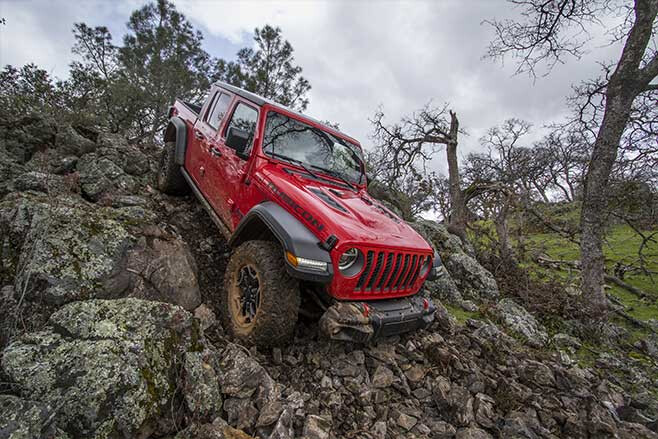
Seats are quite comfortable, and the rear provides enough room for a full-size adult. Grab handles on the A- and B-pillar are solid, but I prefer the optional soft handles that mount directly over occupants on the roll cage. There is plenty of secure storage in the form of lockable compartments behind and under the rear seat. The seat can be locked (with a key) in the up or down position to keep sticky fingers from accessing your gear when going topless. As with all new Jeeps, the Gladiator has engine start/stop (ESS), ABS, electronic stability control (ESC), blind-spot monitoring, a backup camera, adaptive cruise control, and a host of modern safety features.
ON THE ROAD AND TRAIL
With 160km of pavement before we turn off on the dirt, we had plenty of time to evaluate the Gladiator’s street prowess. First impressions were that the extended wheelbase and firm suspension provided a very stable and comfortable ride. Tracking on constant-radius corners was predictable, simulated emergency braking and lane changes did not turn our knuckles white, and in-cab noise levels (soft and hardtop models) were on par for a Wrangler. It is louder than its closed-cab competitors, but lest we forget that in 10 minutes we can take the top off and kick the windscreen down.
Diving into mid-size truck territory, Jeep took it to task to ensure capacities would best the 4WD competition. The Gladiator’s stats come in at 725kg payload and 3500kg towing capacities (with Max Tow option). Generating 213kW, the Pentastar V6 is no slouch. In fact, it flat out gets with the program. Merging on the freeway is an effortless affair, but it did work a bit harder with a 2270kg ski boat in tow.

We spent the afternoon in a Rubicon, motoring through March mud and crawling over rocky technical terrain in the Californian Sierra Nevada. On the trail the Gladiator is everything we’d expect from a Wrangler. When needed, toggling the lockers kept all four tyres turning in unison, and the coil-link suspension did an admirable job of keeping them in contact with the tractive surface. While a solid front axle is not as cushy as its IFS rivals on the highway, this reviewer (who learned to drive on the Rubicon Trail) feels it is far superior than an independent suspension in cross-axle conditions. It also offers greater latitude with regard to raising ride height and other modifications. Approach and departure angles are 43 and 26 degrees respectively (another best-in-class), but breakover, due to the 3480mm wheelbase, lags at 20.3 degrees. We didn’t have the opportunity to test fording depth, but Jeep states it will clear 760mm of standing water without issue.
The automatic transmission’s 4.71:1 first gear combined with the Rubicon’s 4:1 transfer case provides Wrangler’s best-in-class crawl ratio of 72:1 (84.2:1 with the manual). The Sport and Overland offer a respectable 52:1, which to the best of our knowledge also beats most of the competition. Although the Sport and Overland are not available with Tru-Lok differentials, I’ve driven Wrangler JLs equipped with the Trac-Lok system (optional) over highly technical terrain and found it works exceptionally well. I do need to note that even with 280mm of clearance, the longer wheelbase and reduced breakover angle put the skid pans in contact with the hard deck a few times. The turning radius 1356cm also requires some forethought in tight quarters. However, a mild lift would greatly reduce any clearance issues and, we must remember, you can put five people in the cab and a dirt bike in the bed.
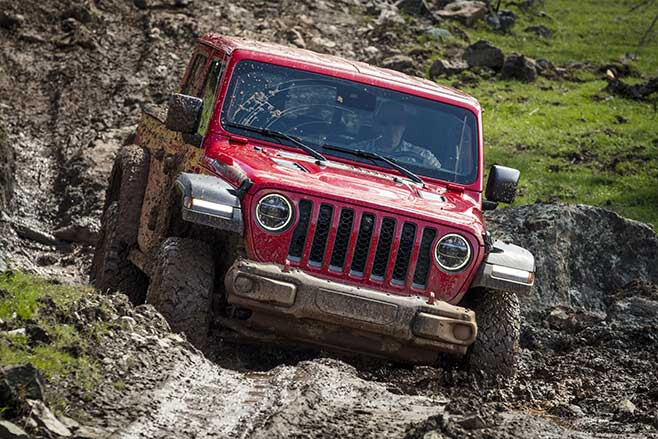
We’ve been waiting for years for Jeep to jump back into the pick-up ute world. When they did, their focus was on capability and capacity. Capability was confirmed when they entered a pre-production unit in one of the toughest races on the planet, King of the Hammers. Payload and towing capacities lead the field, and we love the fact that you can put a canopy and roof-top tent out back (or a stack of plywood). After three days behind the wheel in a variety of conditions and terrains, we’d say the Gladiator JT was worth the wait.
SPECIFICATIONS
Powerplant: Pentastar 3.6-litre V6
Output: 213kW, 353Nm
Transmission: six-speed manual, eight-speed automatic
Transfer case: NV241 Command-Trac (Sport/Overland), NV241OR Rock-Trac (Rubicon)
Axles/ratios: Dana 44, 3.73:1, 4.10:1
Crawl ratio: 52.1:1 (Sport/Overland), 84.2:1 (Rubicon)
Steering: Electro-hydraulic
Suspension: links, coil springs, stabilizer bars (f/r)
Tires: 285/70R17 Falken A/T, M/T
Base weight: 2290kg (Rubicon 5-speed)
Payload: 725kg
Towing capacity: 3500kg
Wheelbase/turning circle: 3480mm, 1356cm
Approach, breakover, departure angles: 43.4/20.3/26 (Rubicon)
Manufactured: Toledo, Ohio, USA



